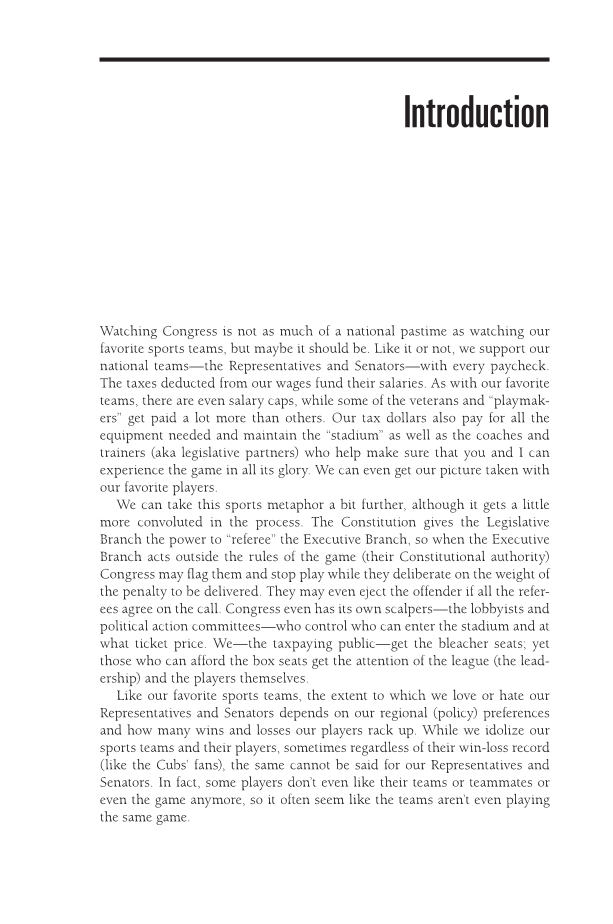Introduction Watching Congress is not as much of a national pastime as watching our favorite sports teams, but maybe it should be. Like it or not, we support our national teams—the Representatives and Senators—with every paycheck. The taxes deducted from our wages fund their salaries. As with our favorite teams, there are even salary caps, while some of the veterans and “playmak- ers” get paid a lot more than others. Our tax dollars also pay for all the equipment needed and maintain the “stadium” as well as the coaches and trainers (aka legislative partners) who help make sure that you and I can experience the game in all its glory. We can even get our picture taken with our favorite players. We can take this sports metaphor a bit further, although it gets a little more convoluted in the process. The Constitution gives the Legislative Branch the power to “referee” the Executive Branch, so when the Executive Branch acts outside the rules of the game (their Constitutional authority) Congress may flag them and stop play while they deliberate on the weight of the penalty to be delivered. They may even eject the offender if all the refer- ees agree on the call. Congress even has its own scalpers—the lobbyists and political action committees—who control who can enter the stadium and at what ticket price. We—the taxpaying public—get the bleacher seats yet those who can afford the box seats get the attention of the league (the lead- ership) and the players themselves. Like our favorite sports teams, the extent to which we love or hate our Representatives and Senators depends on our regional (policy) preferences and how many wins and losses our players rack up. While we idolize our sports teams and their players, sometimes regardless of their win-loss record (like the Cubs’ fans), the same cannot be said for our Representatives and Senators. In fact, some players don’t even like their teams or teammates or even the game anymore, so it often seem like the teams aren’t even playing the same game.
Document Details My Account Print multiple pages
Print
You have printed 0 times in the last 24 hours.
Your print count will reset on at .
You may print 0 more time(s) before then.
You may print a maximum of 0 pages at a time.

























































































































































































































































































































































































